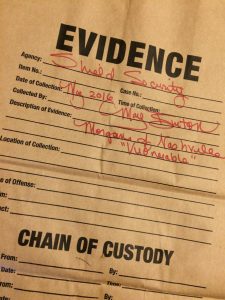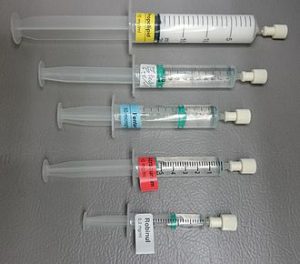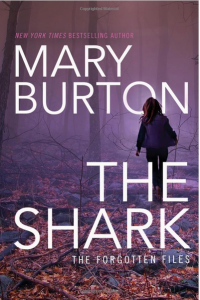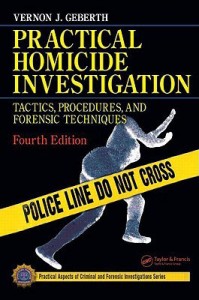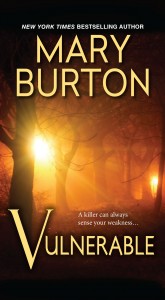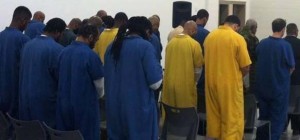
HIDE AND SEEK FEATURED EXCERPT: Making the Cut

Scratch. Scratch. Scratch.
It was the sound of fingers clawing against the dirt, and it had echoed through Special Agent Macy Crow’s dreams last night. She was accustomed to nightmares, which had plagued her 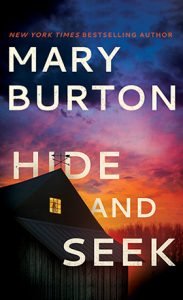


Still unsettled, Macy opened the driver’s side door of her four-door Toyota. She tossed a worn black backpack into the passenger seat, slid behind the wheel, and shifted the pressure off her right side and away from the annoying pain. The discomfort had been a daily part of her life since a hit-and-run five months ago in Texas.
The attack had broken her right leg, cracked her skull, and flatlined her heart for nearly a minute. By rights, she should be dead. She shouldn’t have walked again. She shouldn’t have returned to work.
But here she was, ignoring not only the lingering discomfort but also the crazy dreams that had followed her back from the other side of the rainbow.
Scratch. Scratch. Scratch.
She started her engine, slid on her sunglasses, and drove out of the apartment building lot onto Seminary Road. She followed side streets to the I-95 south entrance. The morning traffic was already heavy and, like always, pissed her off.
Following a familiar route to the FBI complex, she was more anxious than most days. She juggled jolts of worry and excitement as she visualized her upcoming interview with Special Agent Jerrod Ramsey.
Ramsey headed up a small team that tackled violent crimes. His group had cracked several high-profile cases in the last year. Details about their deeds were scant, but their results made them legendary.
After cutting through the traffic sludge, she took her exit and slowed as she approached the guard station at Quantico. She reached for her badge, flipped the leather case open, and handed it to the marine on duty. “Morning, Corporal.”
The marine looked at her picture and then at her, frowning as he’d done almost every day since her return three weeks ago. He handed back her identification and waved her through. She drove to the main FBI building, parked, and presented her badge to the familiar FBI security guard while her backpack was x-rayed.
“Crow, what you call a pen with no hair?” he asked with a straight face.
Every day it was a new joke about her short hair.
“Shoot me now, Ralph, and just get it over with.”
A neurosurgeon had shaved her head minutes before he had cracked open her skull and relieved pressure on her brain. Yes, she currently looked like a cross between Twiggy and a bristle brush. Desperate hunts for hair ties were gone for the near future, but she was aboveground.
“Come on, Special Agent, I bet you know,” he gently coaxed with a shit-eating grin.
“What?” She carefully tucked her badge in her jacket breast pocket.
“A bald point.”
Despite herself, she laughed. “Jesus, Ralph, you need help.”
“Who loves ya?”
Ignoring the Kojak reference, she took the elevator up to the third floor, where Special Agent Jerrod Ramsey worked. She made her way to his corner office and knocked.
“Enter.”
She pushed open the door as a leather chair swiveled toward her, offering her first up close look at Jerrod Ramsey.
Thick brown hair was cut short and swept off a striking face that conjured images of East Coast prep schools, old money, and the Hamptons. He wasn’t classically handsome, but the sharp green eyes and olive skin coupled with tailored suits had to be kryptonite to the ladies.
Ramsey rose and adjusted his blue tie before he crossed the room to her.
“Special Agent Macy Crow,” she said.
A faint smile hinted of a welcome. “Good to meet you, Agent Crow,” he said, extending his hand.
She accepted his strong grip, clasping his hand firmly. “And you as well, sir.”
When Macy had declared her intentions to return to the bureau, she had been temporarily assigned to the ViCAP computer section because her former position had been filled. If she wanted back in the field, she would have to apply for another position.
When she had heard Jerrod Ramsey’s profiling team had an opening, she had thrown her name into the hat. She had expected a quick no to her request but instead had received what amounted to a “Let’s talk.”
Either returning from the dead had earned her points, or someone with juice was pulling strings. Whatever the reason, she hadn’t looked a gift horse in the mouth and had agreed to the meeting. Last night a courier had delivered a file from Ramsey. He’d instructed her to review the case and be prepared to discuss.
Ramsey offered her one of the two seats in front of his desk. When she sat, he took the remaining one.
“How do you like being back at work? Working with tech in the ViCAP unit must be a change,” he said.
“It’s been great.” In truth, staring at the four walls of a cubicle and a computer screen sucked. But it was the price of readmission.
He allowed the pause to linger, expecting her to fill in the silence with nervous chatter. It was a good trick. And one she used when she interviewed suspects.
When she didn’t speak, he said, “I heard you’ve set a few recovery records.”
“Queen of rehab,” she said with a smile. No agent wanted a weak partner. “Ready to rumble.”
His eyes narrowed. Either he had decided she was too flippant, or he liked her moxie. Or maybe the pointed stare was supposed to make her second-guess and worry while he figured her out.
She again absorbed the silence. What the hell. She was her own person and wouldn’t tone herself down for him or anyone else. Near death had a way of cutting through petty worries cluttering everyday life.
He reached across his desk and retrieved a file. Her name was marked on the tab in precise block letters. She imagined he already knew her professional credentials and her Texas origin story. Reading the file now was for show.
“Ten years with the bureau,” Ramsey said. “You worked in Denver, Kansas City, Seattle, and Quantico. Human trafficking is your specialty. You led several successful undercover operations.”
“Blessed with a slight frame, and in the right light, I pass for a teenager.”
He closed the file. “Why not go back to that?”
“The miniskirts and halter tops don’t fit as well as they used to,” she quipped.
“They’d also showcase your scars.”
“Honestly, the scars would have added to my mystique on the streets. But with or without the red racing stripe running up my leg, my days of passing as a teenager are over.” Climbing back-alley fences was also no longer in the cards for her. “Time for a new challenge.”
“I’ve heard good things about you,” Ramsey said. “Texas Rangers said you cracked a big case for them. ViCAP also likes having you.”
“The Rangers solved the case in Texas. I just gave them the crowbar to pry open the cracks.”
“Tell me about Texas.” Ramsey wasn’t going to make her return easy. No slam dunks in this room.
Reciting the story wasn’t easy, despite lots of practice. “You have a reputation for being prepared. You must know as much as I do.”
“I’m not interested in the facts in a report. I want to hear your version.”
She shifted in her seat. “I returned to Texas when my father was murdered. Pop left a message for me. Basically, he said there was a grave in the desert. The grave belonged to my birth mother. Turns out there were three graves. All girls who’d been kidnapped, raped, and murdered after they gave birth.”
“Did you know you were adopted?”
“Hard to hide it. When both parents have black hair and brown skin, it’s difficult to pass a pale blond kid off as their own.” She shrugged. “They were always up front about the adoption. But they left out the part about my birth mother being murdered.”
“That must have been a gut punch.”
“Learning I’m a child of rape and that I’m half-monster wasn’t pleasant. Gut punch sums it up.”
Her adoptive mother had once whispered that Macy had bad blood. When a girl in her third-grade class had been kidnapped and murdered, the other children had been afraid. Macy hadn’t. She had been fascinated by the cops, the cadaver-sniffing dogs, and the blue wave of law enforcement sweeping over their community.
“No one but Macy dare goes near that alley,” her mother had whispered to her father. “It’s not normal.” Her mother hadn’t relaxed until the fourteen-year-old murderer had been arrested.
The Texas trip had driven home the true meaning of bad blood. Since then, its full weight had rested heavily on Macy’s shoulders.
“Violence is forged in my DNA,” Macy said. “Maybe it explains why I’m good at hunting monsters.” Modesty didn’t become her, so she didn’t bother with it. “I’m good at what I do, or I wouldn’t be here now.”
“Do you think you’d have been injured in Texas if you’d had backup?” Ramsey asked.
Macy refused to apologize or backpedal. “I take risks. It’s the secret sauce behind my high-profile arrests, and yes, it set me up for the HNR.”
“HNR?”
“Sorry, shorthand for hit-and-run. The incident has come up a few times, so I abbreviate it. Federal employees love acronyms.”
Ramsey wasn’t amused. “Did your injury teach you any lessons?”
“To be more careful. But I can’t promise. No agent really knows what they’ll encounter in the field or how they’ll react.”
A muscle pulsed in his jaw. “How are you physically?”
“Solid and better every day.” She could lie without blinking, thanks to the undercover work.
If he didn’t buy her assessment, he didn’t give any hint. “Technically, you’re to remain on desk duty for another month.”
She decoded the thoughts lurking behind his dark eyes. Instead of wondering, she asked, “Are you saying you want me on your team?”
A smile tugged at the edge of his lips. “Do you want to be on it?”
“Yes, I do.”
“Why?”
More silence settled between them as they played an invisible game of chicken. Would she stay silent? Or would she admit that catching monsters was how she justified her existence and eased her crushing sorrow for the brutalized girl who’d died giving birth to her in the desert?
“All I can say is that I love the work,” she said.
“Working on my team isn’t easy, Agent Crow.”
Membership on his team meant long hours and unearthing evidence in horrific cases. Ramsey’s agents had a front-row seat to a brand of darkness that most law enforcement officers never saw.
“No one outworks me,” she said. “I settled so many cases in Kansas City, Seattle, and Denver because I took risks and didn’t give up. I’m here now because I don’t give up. I’m the proverbial dog with a bone when I get my hooks into a case.”
He didn’t speak for a moment. “In the weeks you’ve been with ViCAP, you’ve picked up on several patterns in cases around the country.”
She wasn’t here for a pat on the back. “Are you going to ask me about the case file you sent me? The one I studied last night until one a.m.?”
Intrigued, he sat back in his chair. “Tell me about the case.”
She was relieved. They were sailing into the safe waters of murder. “Last week, the skeletal remains of Tobi Turner were discovered in a Shenandoah Valley barn. The teenage girl went missing fifteen years ago. Sheriff Mike Nevada, the new county sheriff and a former member of your team, requested the FBI’s assistance after DNA found on the girl’s backpack matched the DNA of an unknown serial rapist active in the summer of 2004, three months before Tobi vanished.”
Ramsey didn’t look impressed. “Continue.”
Macy carefully crossed and uncrossed her legs. “Unfortunately, this offender isn’t in the CODIS system.” CODIS, the Combined DNA Identification System, was a database of DNA collected from prisoners and arrestees. “Tobi Turner and the rape victims all had a similar look. Slender, dark hair, and petite.”
“Anything else?”
“I did a data search of the Deep Run area in 2004. There was another girl who also vanished two weeks after Tobi. Her name was Cindy Shaw. She was mentioned in a two-paragraph article. The headline read ‘Second Girl Missing?’ There were no follow-ups to that article.”
He frowned. “Cindy Shaw was not in the file I gave you.”
“I always dig deeper than the file.”
“Why is Cindy Shaw significant?”
“Ms. Shaw may not be, but she attended Valley High School with Tobi Turner, she had long dark hair, and she vanished. No missing person report was filed on her behalf. Her last known address was a low-income trailer park. I suspect she was an at-risk kid, and when she disappeared, no one cared.”
“Not all poor girls who go missing are kidnapped, raped, and murdered.”
The reference alluded to her birth mother. And if it was meant to sting, it did. But a little more pain in an overflowing bucket didn’t really matter. “Every case surrounding the time period of Tobi Turner’s disappearance has to be questioned and examined.”
Ramsey looked almost impressed. “What do you suggest I do?”
So there it was. Her shot.
Discipline kept her from scooting to the edge of her seat. “I’d like to go to Deep Run and look into all these cases. I’m a fresh set of eyes, and as you’ve already suggested, I have a knack for detail and pattern.”
Ramsey regarded her for several beats before he said, “I’ll send you to Deep Run for five days. I want to see what you come up with.”
The green light warranted a fist pump, but she resisted. This was a test. Ramsey didn’t care about a personnel manual’s BS question or boxes that needed checking. The field would tell him.
“Should I check in with my superior downstairs?” she asked.
“No. I’ll clear it with him,” Ramsey said.
“You won’t be disappointed,” she said.
He raised an index finger. “I’m not looking for a cowgirl who’s going to ride into town, shoot it up, or get herself killed. I want you to dig up solid intel, and then you’ll debrief the team at Quantico next Monday. I still don’t know if you’ll make the cut,” Ramsey warned.
She hadn’t scored, but she had the ball. Time to take her best shot. “Like I said, you won’t be disappointed.”
“I saw just the slightest limp as you crossed the parking lot. You do a hell of a job hiding it.”
She glanced out his window, which overlooked the lot. “I qualified for the mile run time and retained my expert status at the shooting range.”
“Both scores have dropped since the attack.”
“I can hold my own.” She would not apologize or make excuses. She was done talking.
He studied her. “Hell, I can’t think of many people who would come back after what happened to you.”
“That’s ancient history. All that matters now is this case and me proving I belong on your team.”
“Glad you feel that way, because I can’t cut you any slack. Five days, Special Agent Crow. We’ll both know if you make the grade.”
She resisted the urge to uncross her legs and relieve the pressure on her nerves. Instead, she grinned. “I’m up to the challenge.”
“You’ll be working with Sheriff Mike Nevada.”
“I assumed as much.”
“Didn’t you work with Nevada when he was with the bureau?”
“Our paths crossed in Kansas City. He was searching for a serial killer who preyed on prostitutes trafficked along I-35. I was trying to catch the man pimping the girls. Turned out we were hunting the same guy.”
Crossing paths with Nevada. It was a nice euphuism for sex between two commitment-phobic agents. They had ended whatever it was they’d had on good terms, but walking away from him had been the only time she’d resented the job. “Nevada was a first-rate FBI agent, and I imagine he’s just as good a sheriff.”
“I’ll let him know you’re on your way. Stay in contact,” Ramsey said.
She rubbed her hand over her right thigh. “When do I leave?”
“Today. Pack your bag and hit the road.”
She checked her watch. “Will do.”
Ramsey’s smile was polite, but he clearly had his doubts.
©2019 Mary Burton


